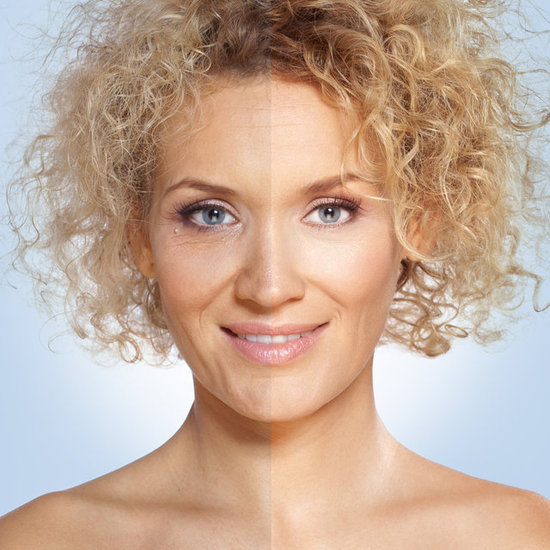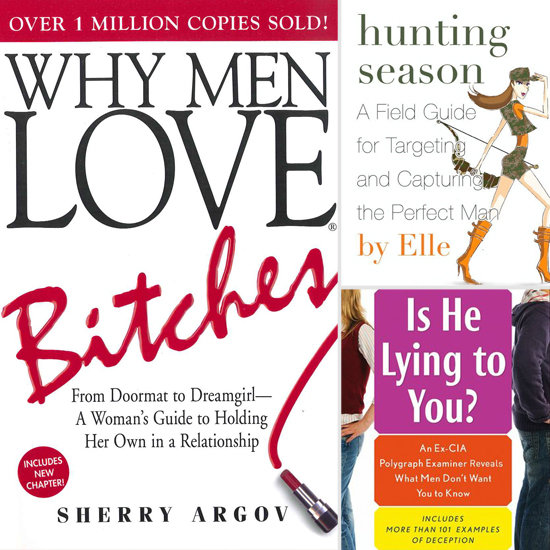Spring is officially here, which means it's almost time to take out your flirty sundresses and sandals for the warmer season. In case you're feeling a bit rusty in the dating department, these nine books will help you regain some confidence and perhaps figure out your dating blind spots. Whether you are single and just want to have fun or looking to have a committed relationship, see what you should pick off the bookshelves to put the spring back in your dating step.
5 Entertaining and Romantic Movie Dates
In honor of the Sundance Film Festival, which kicked off this week, it's time to explore different movie date night options for you and your honey to warm up to this Winter. Beyond your average movie complex, there is a whole world of independent theaters and festivals to explore and attend to have a romantic and memorable date experience. Here are a few ideas to reinvigorate the ol' movie night standard.
- Technicolor features: Films in technicolor have intensely vivid and dreamy hues. Usually independent and historical theaters will screen special technicolor features, and it's a unique and rare opportunity to see such amazing colors and classic films like Gone With the Wind on the big screen. Even if the film you see isn't a classic, it's still nice to curl up close and enjoy the romantic, sleepy quality of technicolor.
- Historical theaters: Check to see if your town has at least one historical theater with a classic, blinking marquee and intricate interior architecture. Research the history behind the building before you go so you and your date can appreciate the theater's story and architectural details upon your visit.
- Cult midnight movies: There is an entire culture that follows midnight screenings of B-rated films like The Rocky Horror Picture Show. The especially diehard will dress up, act out scenes, and sing along. Attending a midnight movie like Rocky can be a ridiculous yet fun way to bond and break any inhibitions.
- Film festivals: Independent, horror, documentary, shorts, underground, and international are just a few of the dozens of film festivals that take place in North America. It's cold and dark during the Winter, so you might as well use the time to expand your film repertoire and have a dozen new stories and concepts to discuss with your date afterward.
- Drive-ins: If you live in an area with a milder climate, you could drive out of town to go to a drive-in theater. The tickets are cheaper, you're in the comfort of your car, and you can bring your own food. Most importantly, depending on your parking spot, you might have enough privacy to engage in some high-school-esque backseat action.
4 Types of Women Don Draper Goes For
It seems like Don Draper has been with them all: from the innocent, angelic blondes to the fiery, passionate brunettes. While he might not have a type, we've certainly seen some themes of attraction. We've been waiting impatiently to find out what Mad Men season 5 will bring for Don and his engagement to Megan. Perhaps his bad boy days are over, but we aren't placing any bets! In the meantime, here's a look back at four types of women Don has gone for.
Photo courtesy of AMC
Meet One Direction: The Latest, Irresistible Boy Band
If you grew up in the '90s, boy bands were all the rage. *NSYNC, Backstreet Boys, and 98 Degrees posters adorned the walls of girls' bedrooms everywhere. We've grown up and taken the posters down, and it feels like it's been a while since a boy band received as much attention. But that's all about to change with the British boy band One Direction. The group has become the first British group to open at No. 1 in the US with its debut album Up All Night, which is quite an amazing feat for these five young guys who were contestants on the British X Factor. This news might make you feel just a bit out of touch with kids these days. We got you covered. Click through for bios of the guys and more band trivia — à la Tiger Beat! Do you spot the next JT?
How Some Countries Limit Airbrushed Advertisements

Airbrushing and advertising have become synonymous. While Photoshop renders perfect, slender, and flawless-faced images that may sell products or magazine covers, some worry that heavily altered depictions can negatively impact women. The good news is celebrities, companies, and several countries are taking a stand against excessive and unrealistic airbrushing. This week, Israel passed legislation that will place limits on airbrushing in fashion advertisements. Israel's new rules will require all advertisers to label photographs that have received retouching. In addition, the regulations will try to promote healthier body image by requiring all models to have a minimum body mass index of 18.5, which is the minimum weight that the World Health Organization considers standard or healthy.
Australia has attempted similar measures. In 2010, Australia's youth minister Kate Ellis came up with guidelines to ban ultra thin models and heavy retouching. The initiative would require Austrian advertisers to "disclose when images have been retouched and refrain from enhancing photographs in a way that changes a person's body shape, for example, lengthening their legs or trimming their waist, or removing freckles, lines and other distinguishing marks."
Working to comb through all advertisements, the UK has an independent group called the Advertising Standards Authority, which regulates advertising across all media platforms to ensure that ads are "decent and truthful." While airbrushing is a common occurrence, the agency does ban ads that are highly exaggerated. Recently, Rachel Weisz's L'Oreal's Revitalift Repair 10 ad was banned for its excessive and misleading airbrushing. In the ad, the actress's face was devoid of wrinkles and promoted extremely false advertising.
Back in the US, we don't have specific laws regulating airbrushing, but you can pick up this month's The Economist's Intelligent Life with the cover featuring an untouched Cate Blanchett. The Intelligent Life editor Tim de Lisle explains their decision, "When other magazines photograph actresses, they routinely end up running heavily Photoshopped images, with every last wrinkle expunged . . . Cate Blanchett, by contrast, appears on our cover . . . with the odd line on her face and faint bags under her eyes. She looks like what she is — a woman of 42." Ironically, an un-airbrushed image becomes a sensational news story, but as a public, do we prefer perfect, pretty images or do we really wish to see true portrayals of our celebrities? What do you make of these types of regulations?
Sexism, Stereotypes, and the Super Bowl: Recent Ads That Sexualize Women
Sex sells — especially for Super Bowl ads — and year after year, major companies try to get away with the raciest, steamiest ads possible, often at the expense of women. Cars, food, technology — it doesn't matter what the product is; these ads throw in a hot, skin-baring woman for distraction and buzz. Ahead of the big game tomorrow, let's look back at some of the most scandalous ads in the last few years. And maybe one day we'll see more Super Bowl ads that show women some respect.
Skechers: "Kim Kardashian For Shape-Ups"
Kim teases her trainer by telling him he's "the best she's ever had, but it's not working out," and she prefers her Shape-Up Skechers over him. This 2011 ad is confusing and mismarketed, because it's eye candy for men, yet targeting women. Plus, no woman in her right mind would pass up that smokin' trainer for a pair of sneakers.
Football-Watching Etiquette: 5 Blunders to Avoid
For those of us women who didn't grow up watching every single NFL game religiously, sometimes it's hard to understand the phenomenon of football tube time. But with the Super Bowl today, even the most antisport ladies can end up at a game-viewing party. And you don't want to unintentionally do one of these football-watching blunders. Guys (and football-loving girls) hate it when we do these things, so avoid some major conflict with your friends and significant other by following our guide to football-viewing etiquette.
Warm Ways to Beat the Single Blues This Winter
Cooler temps and sentimental holidays could leave a single girl yearning for someone to curl up to during the Winter season. But there are plenty of snuggling substations that will keep you warm and comfy until the chilly weather relents, and you're hit with a case of Spring fever. Fire places, pampering, and a night out dancing are just a few ways to heat up your Winter. Check out all of our ideas now.
Which Disney Prince Is Right For You?
If Disney was your first exposure to love stories, we understand if the handsome princes still send your nostalgic heart a fluttering when you rewatch your favorite animated movies. With classics like Beauty and the Beast back in theaters, it's easy to revive the royal cartoon fantasy, and this quiz will help determine which floppy-haired and ridiculously strapping Disney prince matches your grown-up dating style and personality. Answer these questions below and find out now which Disney prince would make you happily ever after.
3 Books Every Single Girl Should Read
With all the relationship and self-help books out there it can be overwhelming to navigate the bookshelves or Amazon for the perfect set of words that will help you heal from a messy breakup, discover a new dating method, or learn to date smarter. Beyond online ratings or recommended reading lists, books that your friends can vouch for are the ones you're likely to pick up and actually read. So for all you single gals out there, here are three quick, intriguing reads that are sure to change your emotional — and maybe even your relationship — status for the better.
10 Types of Sexy Couples From This Year's Sundance Films
The Sundance Film Festival kicked off this week, and we're here to introduce you to some of the sexiest onscreen couples featured in this year's batch of films. If you're a fan of romances, whether they end happily ever after or otherwise, you're in luck! This year's crop of flicks include a wide spectrum of relationships, from comfortable married couples to passionate, forbidden lovers. So here's a breakdown of the twosomes we're sure to see more of once these Sundance selections hit the big screen.
Did You Receive a Midnight Kiss?

New Year's Eve is about good company, a little bubbly, and the highly anticipated countdown. While the midnight kiss is a NYE tradition, it shouldn't make or break the evening. Some might hunt down a man for a midnight kiss. While for others, the kiss is just a spontaneous happenstance. If you snagged a kiss last night, how did it happen? Did your guy friend finally confess his feelings or did a love interest make a move? Did you have a steamy, passionate kiss with a stranger? Did the lover in your life sweep you off your feet when the ball dropped?
7 Types of New Year's Eve Kisses

New Year's Eve kisses can be hot and passionate, sweet and loving, or a complete disaster. You never know what to expect when you lock lips with someone new, which can be part of the thrill or part of the funny story to tell your girl friends the next day. Here's a quick rundown of seven kisses you might receive on New Year's Eve.
- A friend: Whether there is mutual, pent-up attraction or it catches you completely off guard, this kiss could be the key to knowing if you and your friend should take things to the next level (or if you should keep things platonic).
- A crush: If you've been eyeing someone for a while, now's the time to see if this lucky crush locks eyes (and lips) with you when the clock strikes.
- A random: It can be a hit or miss with a stranger, but avoid going for someone totally inebriated. There is a difference between a wild kiss and a vacuum.


